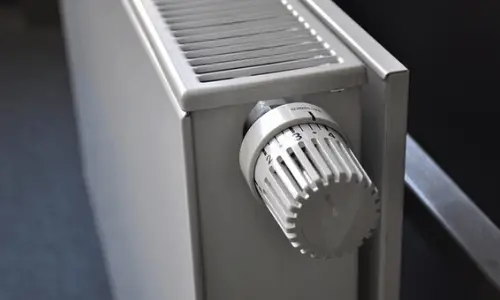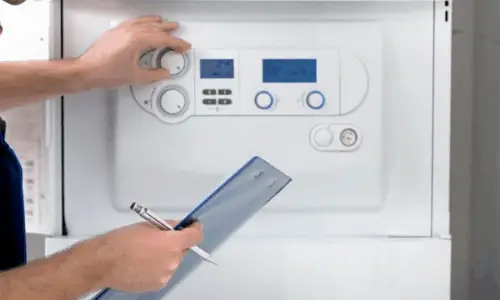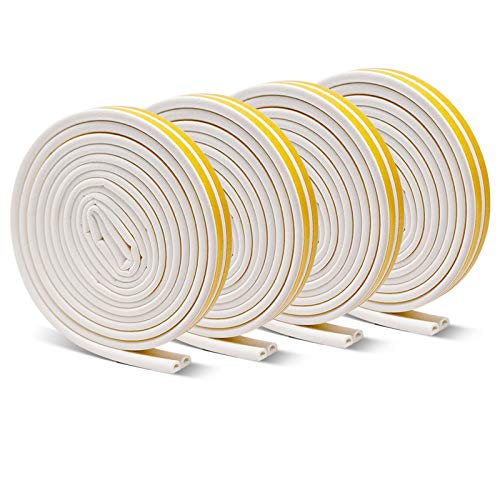If you are one of those people that wait until the last minute to turn on your central heating system to save money, then you are not alone. The rising costs of heating your home during winter months have become problematic for many families. The increased cost has not come with a corresponding increase in household income, so families have to figure out economical ways to use the central heating system.

Unfortunately, most of us living in Europe are in a climate where the use of a central heating system is not only desired but necessary. You simply cannot make it through the winter months without relying on some sort of heating. So, what are the most economical ways to use your central heating system to keep you warm without breaking the bank?
The first element of this question is to understand how the primary element of your central heating system works. Newer, more modern heating systems run at over 95% efficiency, working well to help you heat up your home. Older systems generally operate at between 55 and 70%. This means over 30% of the amount you spend on heating each year is going to waste and regardless of how much you tweak your thermostat, you just don’t feel warm enough indoors.
Unfortunately, the higher you turn up the thermostat the more money you waste. Aside from replacing your entire ageing heating system with a newer, more energy-efficient model what can you do to run your central heating in the most economical way possible?
Below are a few options and things to consider helping you save money and still stay warm.
-
Service Your Boiler
If you are a homeowner or tenant, then you undoubtedly already know that your heating boiler needs to be serviced annually. But what does that mean and why does that matter?
Let’s begin by answering the why and then addressing the when.
The first reason why you should service your boiler regularly is simple proactivity. A regular service schedule means you are more likely to catch any potential problems early, while they are still small and before your boiler breaks down during the cold months when you need it most.
Along the same lines, proactively servicing your boiler reduces the chances that one of those small problems becomes big enough to damage your heating system beyond repair. A regular service is much less costly than replacing your entire boiler.

Secondly, a little bit of money spent will save you money in the long term. Servicing your boiler regularly allows a certified technician to carry out all of the necessary checks on your system to make sure it is running at the peak of efficiency. It also gives you the opportunity to discuss the most efficient heating schedule that works best for you with a certified heating engineer.
As mentioned above, the more efficient your unit, the more money you save overall. It will also help ensure any warranties or guarantees remain valid, so any boiler repair expenses are covered by the manufacturer as opposed the cost coming out of pocket.
Finally, it’s a safety measure. Thousands of people die worldwide each year due to carbon monoxide poisoning. Carbon Monoxide is a deadly gas that has no smell or taste and often goes unnoticed. It is usually released when fuel does not burn properly and its symptoms of CO poisoning are commonly mistaken for flu or food poisoning and affects thousands of people each year.
Failure to get your boiler inspected regularly could increase the risk of carbon monoxide leaks and potentially fatal consequences. A carbon monoxide detector is a must-have to avoid any risks with an oil ageing boiler system.
- Model description: CO alarm system - Proven performance for sensitively detecting dangerous Carbon Monoxide (CO) leaks;...
- Application: The Brandson carbon monoxide detector is intended for early detection of increased concentration of carbon...
Last update on 2024-10-13 / Images from Amazon Product Advertising API
Next, let’s touch on the when. To increase the efficiency of your boiler unit and maintain cost savings associated with a well running system, you should service your boiler at least annually. An annual service is enough to keep your system in good working condition and assure it is running efficiently, economically and will be there when you need to turn it on.
It is also wise to consider having this service done during the summer months when you don’t need to have the boiler running. This will protect you from the potential of having something that needs to be repaired and your home being cold while the system is down.
On a final note related to service, if your system seems to be running efficiently call a licensed technician to have it inspected and serviced. An ill operating boiler can be very costly in the long run.
-
Consider Radiator Reflector Panels
One way to prevent unnecessary heat loss from wall mounted radiators, especially radiators attached to external walls and party walls, is to use heat-reflective aluminium foil behind the radiator. It will reduce the need for keeping the heating on all day, as the warmth generated stays indoors.
Heat reflective aluminium foil helps you avoid heat loss through walls by reflecting it back into the room. Foil specifically designed for this purpose is available to purchase for a reasonable cost.
As a quick DIY short term measure, you could also use a strong, high-quality kitchen foil but it may not be as effective in terms of reflective capability. This will help to assure the heat coming from your radiators remains in your home allowing your system to run economically.
-
Turn The Thermostat Down
Your central heating does not need to run at its highest temperatures setting for your home to benefit from the warmth generated.
While it may give you that toasty, warm feeling, your electricity bill will also keep rising. What you should consider doing is to set the thermostat of your central heating to the lowest acceptable temperature it will allow.
The ideal aim should always be to have your thermostat set at the lowest comfortable temperature. For most people, this is usually between typically between 17.5°C and 21°C. A sensible option will be to try reducing your heating temperature down by a degree Celsius each day until you find what works best for you.
You might also want to consider turning your central heating system off when you are not home. This idea is a rather hotly debated topic as to whether it is efficient enough to save money using it this way.
- SAVE ON ENERGY BILLS - With full control of your Wiser system from our app, you can monitor your energy use, predict...
- COMPATABILITY This kit is designed to work with Combi Boilers Only and will allow control of your heating syste only.
Last update on 2024-10-13 / Images from Amazon Product Advertising API
Some experts say the idea that it is better to leave heating on all day is a myth. Others say is it more energy efficient to leave heating on at a low setting or switched off completely. New digital thermostats like the Nest Home and Honeywell thermostat all come with eco settings built-in and send weekly emails showing how much money you saved using the eco mode.
The secret to this is to understand just how much energy is required to heat your home. If you have a large home and it required a lot of energy to bring it to temperature, allowing the temperature to drop when you are not home may cost more in the long run.
On the other hand, if you have a smaller home or keep your household temperature at a lower setting, keeping the heating low when the home us unoccupied and only running it when needed could be the most economical. Unfortunately, this does not have a clear-cut answer rather, it is dependent on where you live and your individual needs. You also have the choice of getting some efficient space heaters, these will be suitable for use in large rooms and allow you to switch off your central heating system.
-
Install Thermostatic Radiator Valves
Your entire house doesn’t need to be heated to the same temperature if you’re the only person indoors occupying a single room. You should consider switching off the radiators in unused rooms or leaving it turned down to a low level. The temperature in particular rooms can then be turned up as required.

Look at installing thermostatic radiator valves in each room of your house. These radiator valves will help you regulate the flow of water to your radiators which in turn will help you determine the temperature required for each room. A thermostatic radiator valve or TRV is a self-regulating valve that works by changing the flow of hot water into the radiator based on the change in room temperature.
If it gets to warm in the room the valve will close which slows the movement of water into the radiator and in turn, reduces the heating capability of that radiator. The reverse happens if the temperature drops. TRV’s operate in a couple of different ways, either via thermostatic control directly on the unit or remote control in the case of smart TRV’s.
In a larger property with a lot of rooms, a TRV can work to keep your heating system operating efficiently – especially if you have a number of large unused rooms that do not require much heating. As part of an intelligent heating system, they can contribute to significant heating savings by reducing unnecessary fuel waste.
The above solutions are quick and easy ways to assure your heating system is operating most efficiently and economically possible. Scheduling and completing regular annual inspections of your boiler or furnace will help to make sure your system clean and running properly thus conserving fuel and reducing the risk of deadly carbon monoxide poisoning.
Other economical solutions such as controlling your thermostat either via timers or via thermostatic radiator valves can also help to reduce fuel waste. Leaving your heating system to be controlled solely by your thermostat can end up being expensive.
Installing a TRV or a timer on your heating system can help manage how frequently your heating system runs which in effect, will reduce the overall cost. In addition to timers or TRV’s, it is also important to reduce the cold air draughts finding its way into your home. Even a small cold draught can contribute to significant heat loss.
These cold draughts result in your heating system running more to try and maintain a constant temperature, but this will be in vain, as the heat generated will not stay in the room and your thermostat will rarely reach its optimal temperature.
- Weather Strip Tape Material: Made of EPDM material, weather resistant rubber foam, made durable with longer service life...
- Window Draft Excluder Tape Size: 9x6mm( 0.35x0.24inch), Suitable gap: 2-7mm(0.08-0.26inch). 1 Pack consists of 4 rubber...
Last update on 2024-10-13 / Images from Amazon Product Advertising API
Crosscheck easy-to-miss places where you can lose heat – such as mail slots, wall cracks, dog and cat doors and fireplaces, as well as expected heat loss spots such as windows, doors, and skylights.
Sealing up any gaps can help increase the efficiency of your heating system significantly and reduce your heating bills in kind.
Finally, consider getting yourself some heat-retaining items such as a good thermal blanket and a good pair of sweats or thermals is another smart way to save energy.
If you are going to turn the heat down significantly and are concerned that you may be uncomfortable, then sitting on a couch underneath a blanket drinking a warm cup of herbal tea – can go a long way.
Are there any other ways to save money on energy bills?
Following any of the above tips is a great way to save money on your heating bills on a yearly basis, but upgrading your central heating system and home can help you save even more.
Consider Upgrading your Boiler
 Any aged older boiler will not work as efficiently as it is expected to, so upgrading to a newer model could be a good way to increase efficiency. Combi boilers are usually the cheapest and most efficient ones to get, running at around 90% efficiency, and they work well in modern family homes. If your boiler is more than 10 years old, upgrading to a newer model could save you hundreds of pounds each year.
Any aged older boiler will not work as efficiently as it is expected to, so upgrading to a newer model could be a good way to increase efficiency. Combi boilers are usually the cheapest and most efficient ones to get, running at around 90% efficiency, and they work well in modern family homes. If your boiler is more than 10 years old, upgrading to a newer model could save you hundreds of pounds each year.
Consider Upgrading your Radiators
It’s not just old boilers that can become inefficient with age, the radiators dotted around your home could also be costing you money each year.
Bedroom radiator designs and towel radiators have improved over the years, and newer models are much better at retaining heat, keeping the temperature in your home warmer for longer. You should ideally get a heating engineer to do this for you, but if you are a keen DIY-er then fitting one yourself is not impossible.
Consider Upgrading your Thermostat
If the thermostat in your home is an old analogue one, then you should consider upgrading to a digital or smart alternative. Smart thermostats have come a long way from when they were first made and they now allow you to have complete control – offering the most effective heating schedule.
They help reduce how much work your boiler has to do to keep your home warm by managing the temperature as efficiently as possible.
Insulate your home
Ensuring your home is properly insulated is the best way to keep it warm, preventing heat loss, giving you the energy saving option of not needing to switch on your boiler as often. There are a number of different options available to you to achieve this. Loft insulation is a cheap and easy fix that can save you a huge amount, and it’s something you can do yourself without too much trouble.
Other options include adding wall insulation and upgrading your windows to double or triple glazing.
Another quick fix that can easily be done is adding weatherstrips to any gaps by your doors and windows to help with draught proofing. For permanent gaps that don’t need to be opened and closed frequently, expanding foam will work a treat and it can be bought online or from any local DIY store.
Another smart money saving option is to buy some decent thermal curtains, as they can act as an additional heat barrier when closed.



